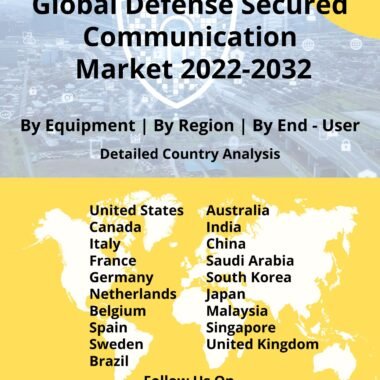Description
Counter air defense is defined by NATO as “all measures designed to nullify or reduce the effectiveness of hostile air action”. Anti-aircraft warfare is inclusive of surface-based, subsurface (launched through submarine), and air-based weapon systems. Associated sensor systems, command and control arrangements, and passive measures (example- barrage balloons) are also a sub-set of this market.
Several countries make use of this technology for homeland defense. Missile Defense is a subset of air defense, it is used to counter any projectiles in flight that might act as an incoming threat.
The critical part of air counter-air defense is precision for three-dimensional tracking of the target and timing. This means that the decoys need to be guided for target or manually projected at the same to destroy the incoming weapon. The accuracy for determining the position of the projectile and the speed of motion of the same is of utmost importance in this case.
The overall air missile defense systems market is segmented by Technology, Region, and type. The regional segmentation for this market provides a competitive mapping across North America, Europe, APAC, the Middle East, and the RoW. The technology-based segmentation for this market can be further categorized into Fire Control System, Weapon System, Countermeasure System, as well as Command and Control System. The type-based segmentation for this market includes subsonic, supersonic as well as hypersonic missile technologies.
Growing geopolitical tensions between nations like the US and China account for the growth associated with the air missile defense systems markets. Moreover, the inception of counter-insurgency programs is also anticipated to drive the market growth dynamics for this segment. Border tensions regarding regions like the South China Sea is another factor that entails the market growth for the air missile defense systems vertical. The resourcefulness of this region is one of the main factors that has been causing this dispute.
One of the key verticals within the air missile defense systems sector is Theatre Missile Defense. Theatre Missile Defense is known as Theatre ballistic missile defense system. These systems maintain the security of a particular region or theatre through the deployment of nuclear and conventional missiles. The purpose of TMD is to protect allies from the local threats present in that region. The technology is also used as a solution to address specific security issues, thus enabling credibility when it comes to addressing particular threats. TMD involves the detection, tracking, and destruction of the incoming threat. The introduction of such technologies increases the security associated with a region.
One key disadvantage of TMD is that it relies on the strategic and tactical placement of nuclear weapons on foreign, allied soil. The vessels may become a visible target for anti-nuclear protectors. However, on further studying the market it is seen that given the niche nature of these military products, the cost associated with the fabrication of the same is very high. Moreover, the market technology entails a highly competitive market with high barriers to entry.




